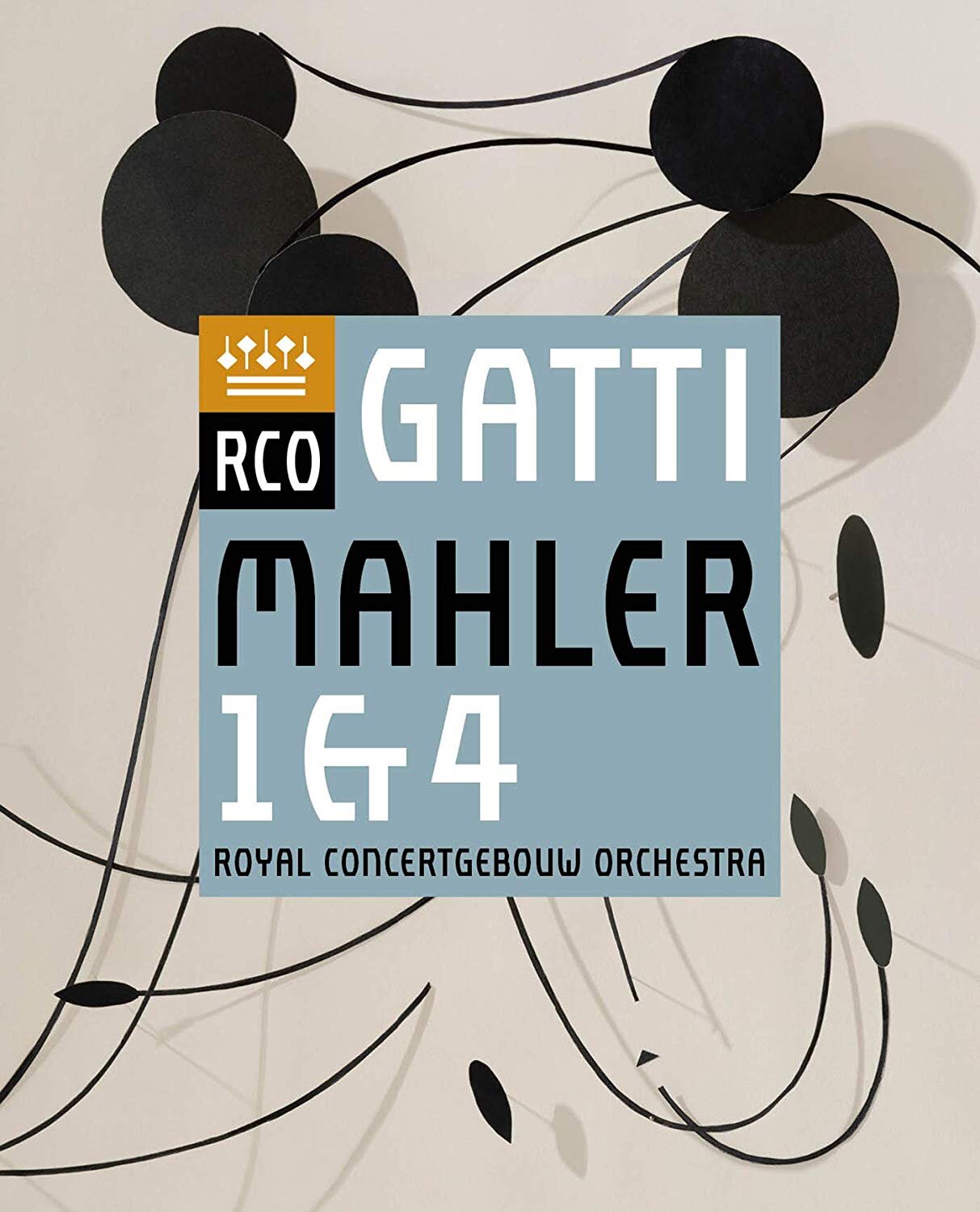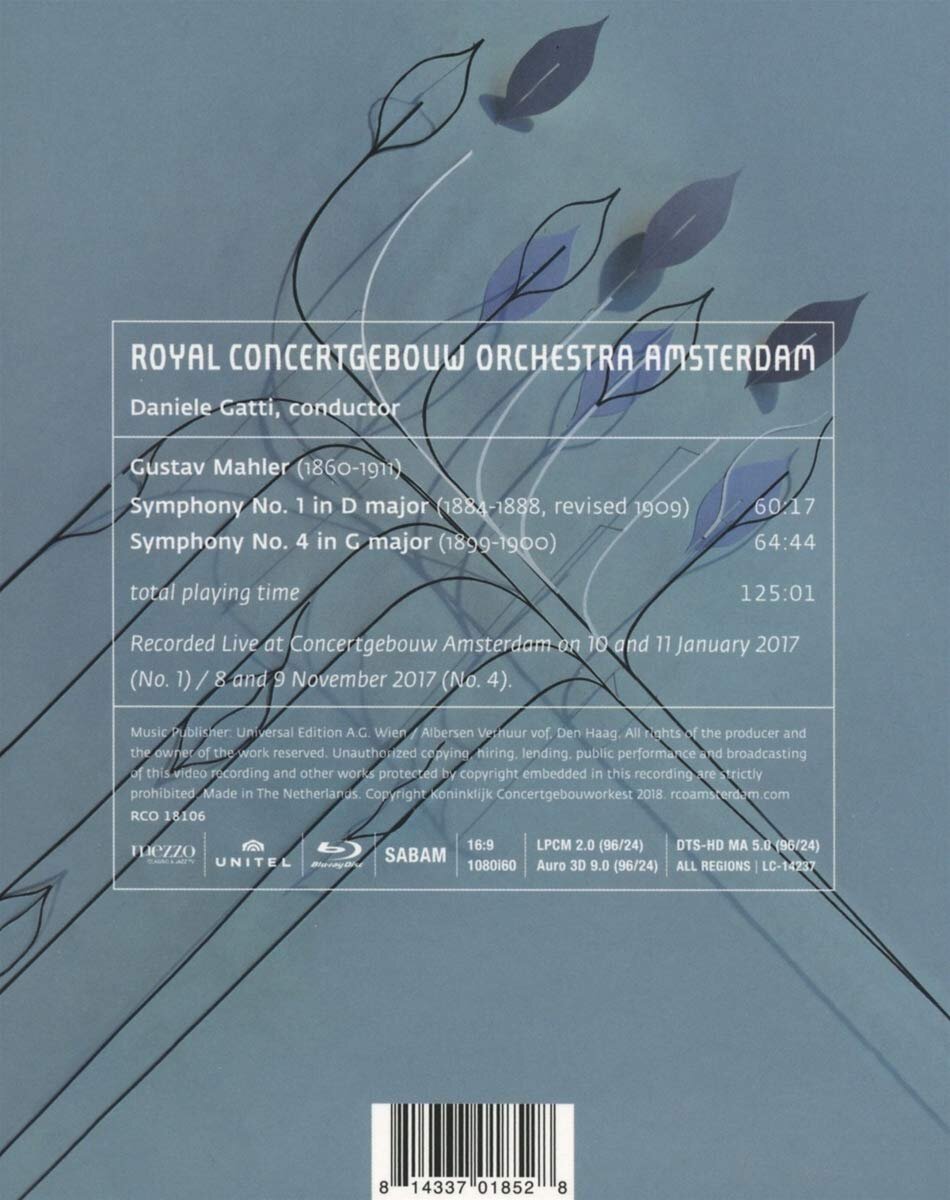

Mahler Symphony No. 1 ("Titan") and Symphony No. 4. Danielle Gatti conducts the Royal Concertgebouw Orchestra in 2017. Julia Kleiter is the soprano in Symphony No. 4. Directed for TV by Dick Kuijs. Released 2019, music reviewed was recorded with 96kHz/48-bit sound sampling and played with a 5.0 dts-HD Master Audio file. There is also a LPCM stereo file and an Auro 3D 9.0 file, both recorded at 96kHz/48-bit. Grade: B
In 2016 Gatti recorded a Mahler 2 that was published in 2017, and we gave that Mahler 2 a B+ grade. The Mahler 2 video content was free of DVDitis! We had to mark the title down a grade for a too-dark picture caused by a change in the lights in the Concertgebouw auditorium. We hoped this 2019 Mahler 1 & 4 would finally get Dick Kuijs an A grade for a RCO video! Alas, things seem to be getting worse for RCO video, not better.
The orchestra performance was magnificent, as always with the RCO. The soloist was adequate. But the bad new lighting in the auditorium continues to give Kuijs fits. The stage is too dark! The whole picture is dank and unpleasant with shadow fields, odd coloration, and glaring reflections off the brass instruments to boot. Let’s see some screenshots.
The lighting of the orchestra in our first shot below may be OK for the live audience because the eye can see much better in low light than cameras can. In this whole-orchestra shot the black clothing and sheet music stands tend to form into clumps with heads sticking out. This plus the low level of the camera makes it hard to distinguish the various musicians:
Let’s look down this row of woodwinds in the center of the orchestra. Every face has some shadow and it seems there is no light on the English horn:
Here’s a close-up of part of the subject above:
Now let’s look at the same musicians from the other side. Shadows everywhere!
Even in close-ups, the bodies of adjacent players merge into one black blob—sort of an accidental Caravaggio effect:
What color dress was julia Kleiter wearing? It was a metallic deep blue, but you can’t see that in this image:
When there’s too little light, one can try to open the camera aperture to let in more light. But then reflective surfaces can overwhelm the camera and the image starts to lose detail or even dissolve into glare:
We did a Wonk Worksheet on movements 1 and 2 of the Mahler 1, which is, we think, representative of the whole disc. The pace is way too fast at only 6 seconds per clip, so the patient has DVDitis. (The number of supershots was marginally acceptable and the conductor test was OK.)
We start on our grade with A+. For the dark stage and weak PQ we deduct a grade and we deduct another grade for the excessive pace. That puts us at C+. But we bring the grade back up to a B for the 96kHz/48-bit sound sampling. So poor Kuijs seems to be losing ground since his 2016 recording of Mahler 2. Management has to beef up the lighting and give Kuijs permission to slow down the pace. Then the RCO can have the great video that both the musicians and the public deserve. (H’m. About 3 years has passed since this recording was made. Has the lighting in the Conzertgebouw has been improved during that time? Please tell us if you know anything about this!)
OR








